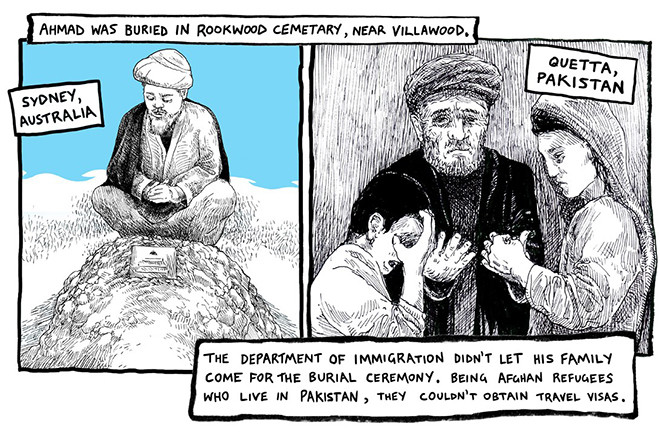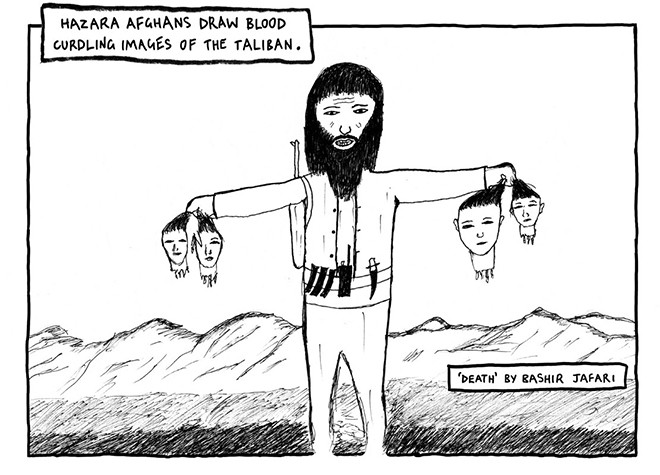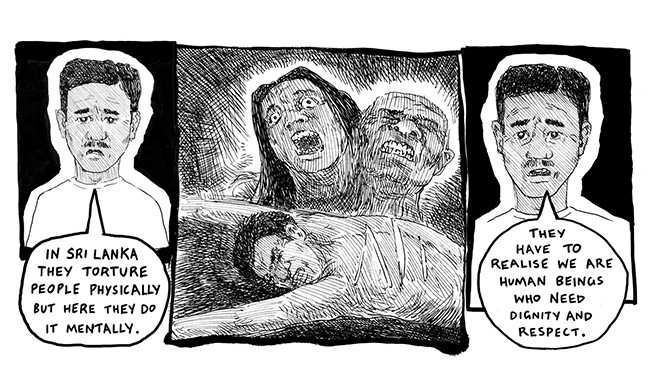Cameras Are Banned Inside Villawood Detention Centre, But An Australian Artist Found A Way To Tell The Story
Spoiler: it's just as devastating as you might imagine.

Despite the fact that Australia’s treatment of asylum seekers is constantly in the news, we’re so rarely granted a first-hand look at what that treatment is exactly. Though the Australian Press Council has been demanding greater access to these facilities for over a decade now, our detention centres have largely remained off limits. No cameras. Limited media access. Even the President of the Human Rights Commission got thrashed when she reported what was going on.
In his time as Immigration Minister, Phillip Ruddock argued that these restrictions were in place to protect the identity of asylum seekers fleeing persecution. But with the UN recently declaring that our treatment contravenes the anti-torture convention, that logic seems more dubious than ever.
Which is why some artists, advocates and journalists are finding a new way to tell the stories. Last year, journalist Nick Olle of The Global Mail interviewed a man who had previously worked as a Serco guard in an Australian detention centre. He then enlisted the help of Pat Grant and Sam Wallman to present the man’s thoughts as illustration, and it struck a chord with tens of thousands of Australians; the piece — ‘At Work Inside Our Detention Centres: A Guard’s Story’ — was nominated for a Walkley.
Now, as part of GetUp’s Shipping News project — a crowdfunded grant to commission stories about asylum seekers — Sydney-based artist Safdar Ahmed has given us a rare glimpse into life in detention. After working at the centre for four years as part of The Refugee Art Project, Ahmed has put together a moving graphic novella entitled Villawood, which was published in full on Medium last week.
The Shipping News offered us a few panels to republish here. Spoiler: it’s just as upsetting as you might imagine.
–
Split into four chapters, the work chronicles Ahmed’s various experiences in the centre as an outsider, as well as the personal stories of those who live there.
The first is in fact a high-profile case.
In 2013, a 26-year-old Afghan refugee named Ali Ahmad Jafari died of a heart attack in his cell. His depiction in the comic suggests seriously concerning behaviour from the guards who were involved, as well as the tragic events which were to follow.
Ahmed then details some of the smaller injustices and difficulties of life in detention. This includes but is not limited to the threat of assault and hostility from those inside as well as the public’s conception of them outside.
These allegations of mistreatment and a general lack of respect for those in detention facilities is something we’ve seen before. But as those seeking asylum have little recourse to tell their own stories, it’s rare to get such affecting first-hand insight.
Penned by an observer, Villawood may not be a completely unfiltered view — but it’s hopefully enough to get people thinking.
You can read the full graphic novella here.
If you’d like to see more of Ahmed’s work, here is one about his experiences being Muslim in the wake of the Charlie Hebdo shooting. Here is another which features a cartoon Scott Morrison being tortured by a militant kangaroo. We don’t necessarily condone that as a recourse against his policies, but… y’know, it exists.






